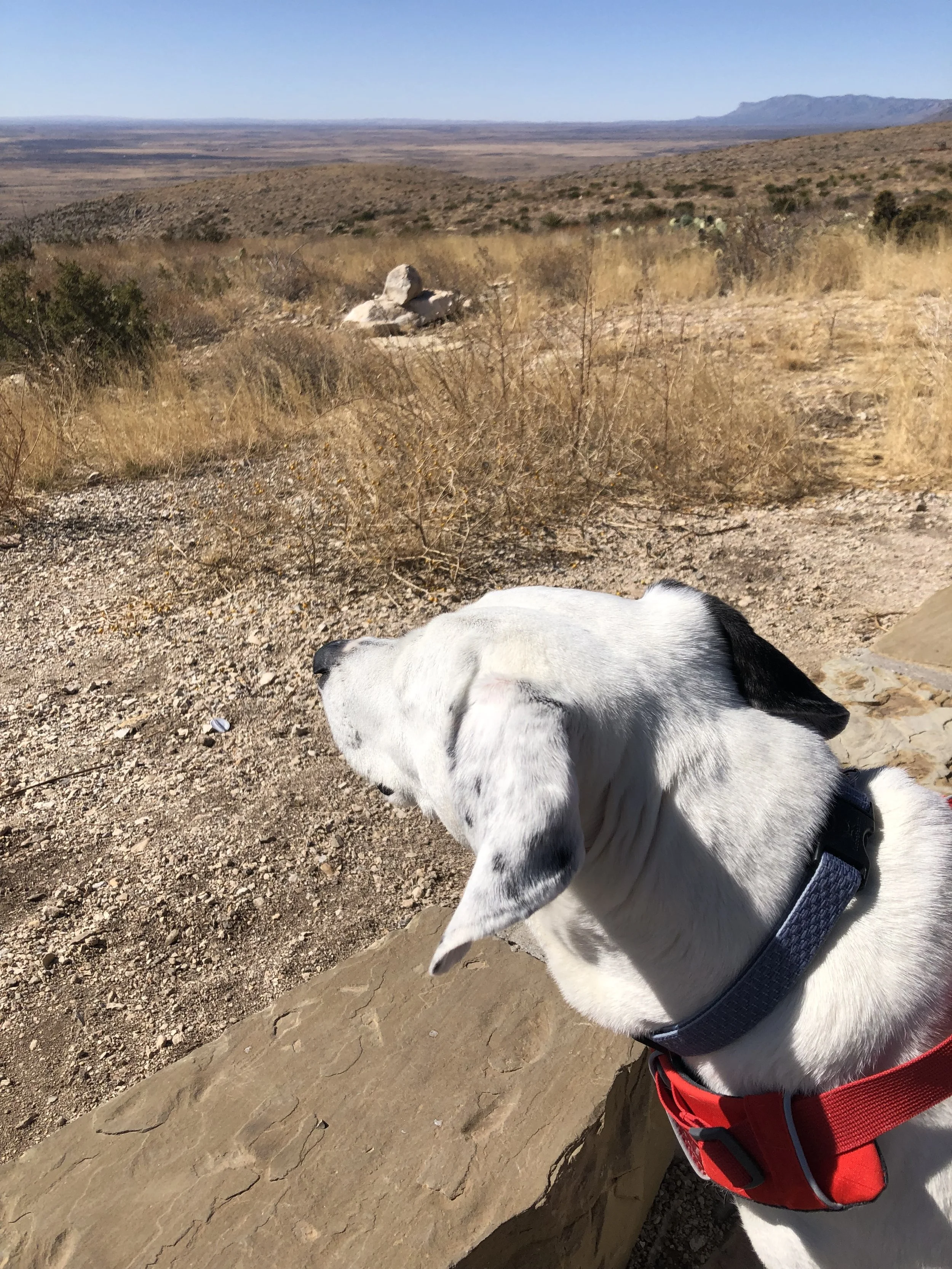5 Things to Love near Guadalupe & Carlsbad Caverns National Parks
Guadalupe Mountain National Park in Texas is a wonderfully rugged park full of backcountry trails, unique desert and canyon ecosystems, and high elevations. Carlsbad Caverns National Park in New Mexico holds over 100 caves and otherworldly underground chambers with stalactites clinging to the ceiling. With the parks being so near each other, it’s easy to explore both. In between these special neighbors is a playground of public land with unique features. We enjoyed the parks and loved discovering gems between and outside of the national parks. We ended up staying for several days to experience the area.
Guadalupe Mountains
Camping
The National Parks Highway spans Guadalupe Mountains National Park and Carlsbad Caverns National Park and along it are several first come, first served public land camping areas. We easily found a free, dispersed site on BLM land between the two parks. The land was powdery sand, an open range with desert plants and views of the Guadalupe Mountains. We could see Capitan Reef, the ancient fossilized reef formation that punctuates Guadalupe National Park, standing prominently in the distance.
There are several camping areas off National Parks Highway near White’s City, New Mexico. Sunset Reef (sites with picnic tables) and Chosa Campgrounds offer free options on designated BLM land. Chosa has a maintained gravel lot that is accessible to any kind of camper (tent, van, large RV) and is a convenient place to park. This was a good option for the area, but remote sites abound as you continue past the lot and up the road. Several turnouts and dirt roads hold dispersed sites, often with rugged fire rings. We reached a remote site smoothly while towing a travel trailer and had the area and scenery to ourselves for days.
Cholla Cactus starting to bloom, Guadalupe Mountains
Rattlesnake Springs Day Use Area
While in Big Bend National Park, we’d met travelers who had just come from Carlsbad National Park. They recommended Rattlesnake Springs as a must-see and a great spot for birding. Rattlesnake Springs was only a few miles from our campsite off the National Parks Highway and is a day-use area operated by the National Park Service. It is so named for the endemic reptiles and the clear natural springs the serve the park and entire surrounding area.
The birds were indeed buzzing on a sunny, late winter day, including vermilion flycatcher and Bohemian waxwing. A large cottonwood grove planted by the Civilian Conservation Corps offers a cooling oasis and a shady picnic area. The braided bark of the mature specimens is beautiful.
Cottonwood Day Use Area
On the road to Slaughter Canyon (a real favorite, below) is a respite in the BLM Black River Recreation Area. The short interpretive nature trail leads to a wildlife viewing area – a creek of clear water that, on a warmer day, would warrant a swim. We met a family who says the area used to be covered in trees, but due to a recent burn, the landscape is grassy and recovering. It is another great birding spot, and we watch a Harris hawk circle.
Slaughter Canyon
We followed signs to Slaughter Canyon without knowing much about it. It is part of Carlsbad Caverns National Park and quickly became one of our favorite spots. There are a few trails to choose from and you can walk as long as you like, in the canyon wash and above the canyon. We were the only people there; a contrast to both Guadalupe Mountains and Carlsbad Caverns main areas. The canyon is home to Barbary Sheep which originate in Africa but were introduced by leased hunting operations in the area. The sheep have habituated to the canyon. Slaughter Canyon is a highlight of the area. Bring water and enjoy a crowd-free natural desert canyon experience.
Sitting Bull Falls Recreation Area
Only to rival Slaughter Canyon is Sitting Bull Falls Recreation Area, a canyon in the Lincoln National Forest west of Carlsbad. We drove for about 30 miles down a back road to reach the area, without expectation and just for the sake of exploration. What opened after ranchland and quarry sites was a perplexing, striking landscape across the USFS boundary. High cliff walls with delicately perched plants and conifers and leafy trees surround a series of spring-fed waterfalls.
When we entered the parking lot, we were surprised at the facility, the site itself, and the other cars there, as we had only passed one vehicle along the way. (There is an alternate route from the city of Carlsbad that most travelers take to reach the site). Even with other visitors, there was plenty of room to roam and view the falls on an easy path. An additional trail gives the option to continue up to the springs – recommended! This trail system offered varying lengths with views of the tranquil springs and with pools for dipping toes. Sitting Bull Falls was an unexpected delight and a must-see next to Slaughter Canyon.
Pearl, Carlsbad Caverns National Park Visitor’s Center
We loved visiting Guadalupe Mountains National Park for its interpretive and rugged trails, including the wooded McKittrick Canyon. Carlsbad Caverns National Park too offered interpretative trails, a scenic offroad drive, and an underworld cavern experience. A reservation is needed to visit the main cavern to limit crowding. To protect pets and natural resources, the national park offers a kennel service to keep pets cool while owners visit the cavern. Our dog explored the visitor center and surrounding trails, though we returned later without her instead of opting for the kennel.
In addition to the natural wonders of the main parks are the off-the-beaten-path areas in between, offering endless opportunities for exploration.




